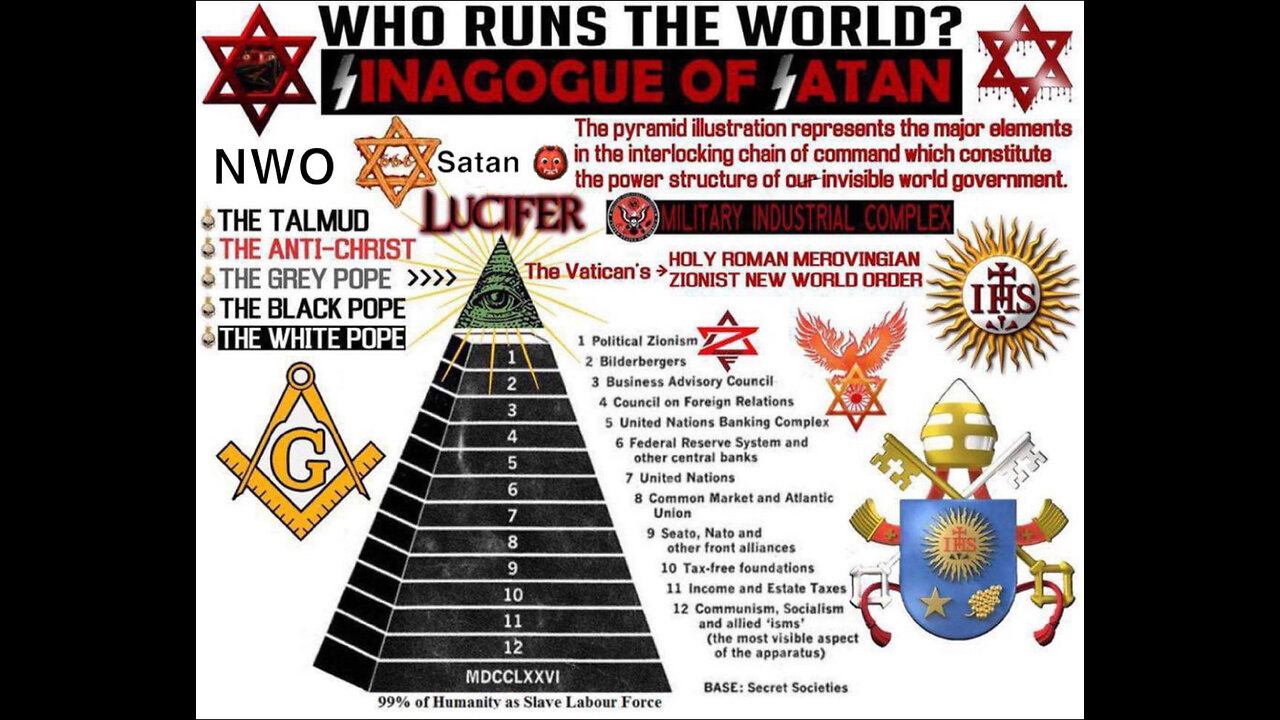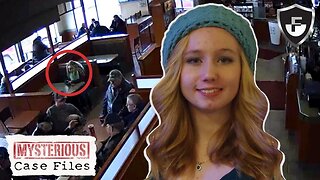Premium Only Content

The Secret Origins of Freemasonry — 143 AD
After the final fall of Jerusalem in 135 AD, the Jewish leadership in exile faced a crisis: no homeland, no central power.
From Persia, the Exilarchy — a hidden command structure — directed Jewish communities worldwide. But in 143 AD, something new emerged. According to Masonic records, the Royal Order of Freemasonry was founded in Palestine, not as a builders’ guild, but as a covert fraternity designed to infiltrate and influence foreign governments.
From this seed, secret societies multiplied: Freemasons, Rosicrucians, Elks, Moose, Foresters, and more. Locals believed they were joining esoteric brotherhoods, but the hidden leadership traced back to the same source.
By 144 AD, another milestone appeared: the first version of the New Testament, published by Marcion. Originally written in Samaritan, scholars of the time admitted its origins were rabbinical. From Marcion’s Gospel came the later accounts of Matthew, Mark, Luke, John, and the letters of Paul.
In 161 AD — nearly 130 years after the supposed crucifixion — the first council in Alexandria formally declared Jesus a “historical figure.” If the story had been universally known, why would such a council even be necessary?
The evidence suggests that secret societies, occult texts, and even religious scripture were carefully crafted systems of influence — tools of infiltration that reshaped European culture from within.
-
 15:28
15:28
FragmentsOfTruth
8 days ago🌍 Flat Earth, Firmament & The Forgotten Truth Before 1958
395 -
 16:23
16:23
True Crime | Unsolved Cases | Mysterious Stories
1 month ago $1.62 earnedThe Strange Disappearance of Mekayla Bali | (Mini-Documentary)
19.8K2 -
 10:03
10:03
nospeedlimitgermany
12 days ago $2.33 earnedVW Golf 5 R32 | 250 PS | Top Speed Drive German Autobahn No Speed Limit POV
24.1K4 -
 1:35
1:35
Memology 101
1 day ago $1.49 earnedChicago Mayor Johnson calls LAW ENFORCEMENT a "SICKNESS" he will "ERADICATE"
19.4K38 -
 10:17
10:17
Advanced Level Diagnostics
13 days ago $1.81 earned2007 Chevy Express - Replaced Everything But The Code Remains!
25.7K -
 1:01:11
1:01:11
The Mel K Show
5 hours agoMel K & Harley Schlanger | History Repeats: A Wake-Up Call for Humanity | 9-20-25
92.1K28 -
 2:13:52
2:13:52
Mally_Mouse
13 hours ago🌶️ 🥵Spicy BITE Saturday!! 🥵🌶️- Let's Play: Lockdown Protocol (New Updates!)
91.4K6 -
 12:57
12:57
Culture Apothecary with Alex Clark
1 day agoMy Last 6 Years With Charlie Kirk | In Memoriam with Alex Clark
39.8K9 -
 2:48:55
2:48:55
Barry Cunningham
10 hours agoPRESIDENT TRUMP WILL ENSURE THAT CHARLIE KIRK DID NOT DIE IN VAIN!
75.1K125 -
 2:14:52
2:14:52
SavageJayGatsby
10 hours ago🔥 Spicy Saturday - Let's Play: Lockdown Protocol 🔥
98.5K2